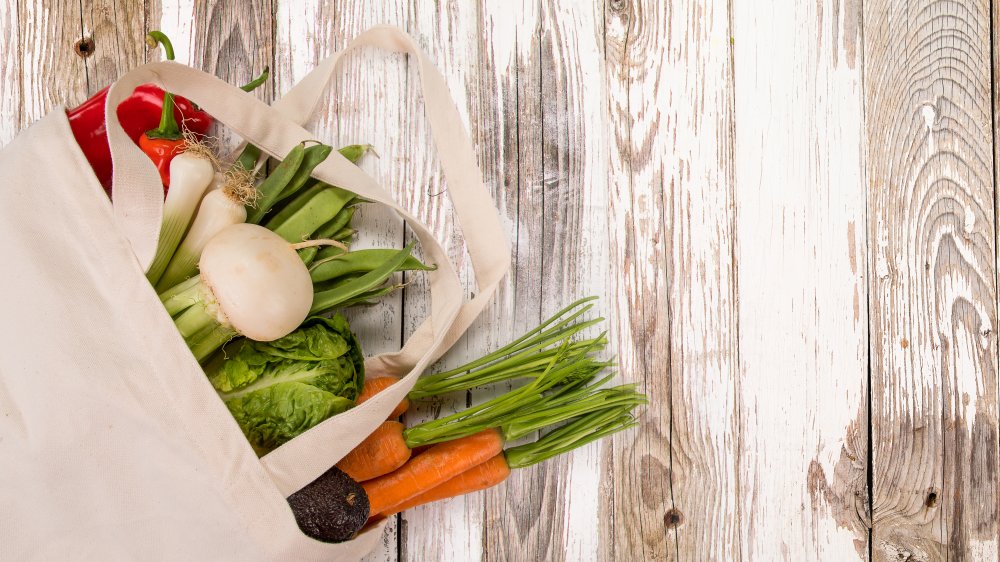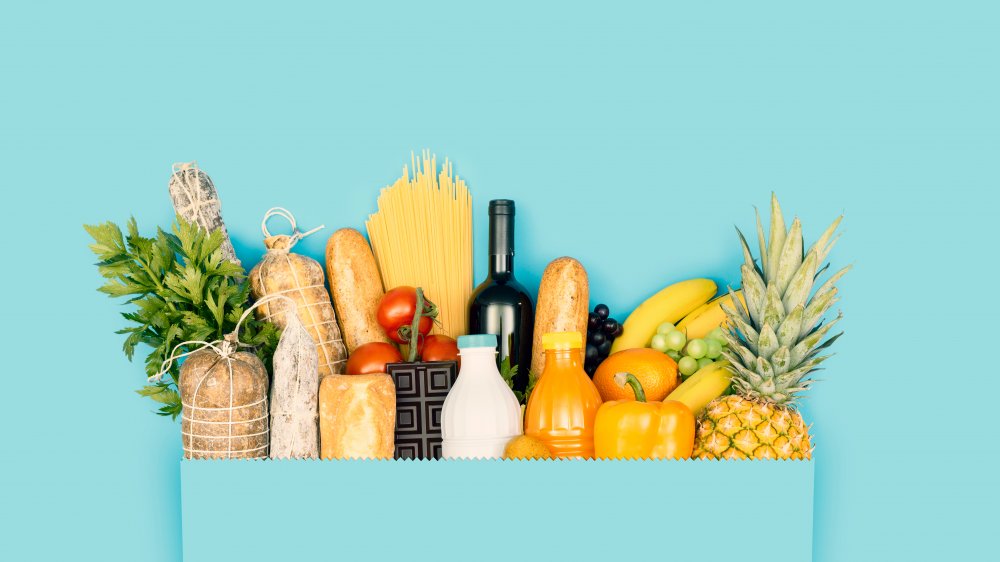How Safe Is Grocery Delivery During The Pandemic?
With so many bars, restaurants, and businesses closing it's become more evident by the hour that the COVID-19 pandemic is changing the way we live our lives. The CDC recommends social distancing and staying at home as much as humanly possible, so how should we get the groceries we need to stay healthy during these times?
There are safe and easy options to use, as grocery delivery services like Instacart are still up and running. AmazonFresh via Amazon Prime and Whole Foods are offering free two-hour delivery in many areas. Walmart and Shipt also have some very reasonable subscription plans (via Good Housekeeping).
In order to get the most out of your deliveries, be sure to order shelf stable and nutrient dense foods like beans and legumes, canned fish, nut butters, oats, dried pastas and grains, sugar-free canned fruits and veggies, dried fruits and nuts, water, shelf-stable milk, and coffee. These foods will last you a long while without needing to hoard resources, and will help keep your immune system in tip-top shape (via CNN).
You should also consider purchasing frozen fruits and veggies instead of fresh because according to CNN, they contain as many nutrients as fresh produce and obviously last far longer.
Not into using your kitchen? You're in luck! Take-out delivery services such as DoorDash, Postmates, Grubhub, and Uber Eats are still going strong if you're not in the mood to cook (via Forbes).
Grocery delivery is a better option than shopping
Food delivery is certainly a better option than the grocery store when practicing social distancing, but there are still some risks, most of which can be avoided or mitigated by promptly washing your hands after delivery and opting for "no-contact" service. This month, Postmates introduced a feature that allows for the customer to choose whether or not they have any contact with the driver. Instacart responded similarly with their new Leave at My Door option (via CNET).
COVID-19 spreads mostly though contact with an infected person, so if you let drivers know you'd like the food left on your doorstep you'll be much safer. The Wall Street Journal reports that i's unlikely, though possible, to get the virus from the food's packaging. The food itself is a low concern as far as transmission of the virus goes, and cooking food seems to eliminate the risk. The most important thing to do is not touch your face and wash your hands after handling products. "Ordering at home may be the best way to get food," Andrew Janowski, a pediatric infectious disease physician at Washington University School of Medicine and St. Louis Children's Hospital, told WSJ. "Simply because there's less people."
Room service while in the comfort of your own home has never been easier thanks to these company's efforts to soothe consumers. Best of all, they're all excellent ways to follow the CDC's advice.

